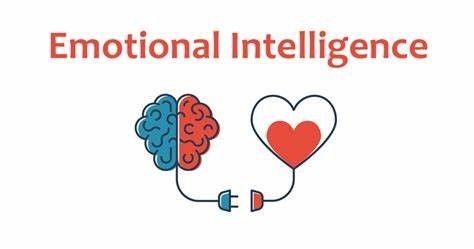Defining Mindfulness in Enhancing Emotional Intelligence
Enhancing our mindfulness in Emotional intelligence (EI) is the ability to recognize, understand, and manage our own emotions while also recognizing, understanding, and influencing the emotions of others. Consequently, in personal life, EI helps build stronger relationships, succeed at school and work, and achieve personal goals. Thus, In professional life, EI enables effective leadership, teamwork, and communication.
Connection Between Mindfulness and EI
Mindfulness practices can significantly enhance components of EI such as self-awareness, self-regulation, empathy, and social skills. Through mindfulness, individuals learn to observe their thoughts and emotions without judgment. This heightened self-awareness leads to better self-regulation, allowing for more thoughtful responses rather than impulsive reactions. Moreover, mindfulness fosters empathy by encouraging a non-judgmental awareness of others’ feelings, thus improving social interactions and relationships.
Scientific Evidence
Several studies support the link between mindfulness and enhanced emotional intelligence. Research published in the journal Mindfulness found that individuals who practiced mindfulness meditation had higher levels of EI compared to those who did not. Another study in the Journal of Occupational Health Psychology showed that mindfulness training in the workplace led to improved emotional regulation and reduced stress among employees.
Practical Mindfulness Exercises to Boost EI
To boost EI through mindfulness, consider these exercises:
1. Mindful Listening
- Step 1: Find a quiet space with a partner.
- Step 2: One person speaks for a few minutes about a chosen topic.
- Step 3: The listener practices active listening without interrupting.
- Step 4: Afterward, the listener reflects on what was heard and shares insights.
2. Emotional Check-Ins
- Step 1: Set a few moments aside each day for reflection.
- Step 2: Notice and name your current emotions without judgment.
- Step 3: Reflect on the triggers of these emotions and their impact on your actions.
Case Studies and Personal Stories
Consider the story of Jane, a manager at a tech company. Accordingly, Jane struggled with stress and team communication. Then, after integrating mindfulness practices, she noticed significant improvements. So, by practicing mindful listening, she became more attuned to her team’s needs and concerns, fostering a more collaborative and supportive work environment. Another example is John, who used emotional check-ins to manage his anxiety, leading to better decision-making and interpersonal relationships.
Applications in the Workplace
Mindfulness can be integrated into corporate training programs to enhance team dynamics and leadership skills. Many companies, such as Google and General Mills, have implemented mindfulness programs with notable success. Additionally, these programs often include mindfulness meditation sessions, workshops on mindful communication, and regular emotional check-ins. Therefore, the result is a more emotionally intelligent workforce, leading to improved employee well-being and productivity.
Tips for Integrating Mindfulness and EI Practices into Daily Life
Incorporating mindfulness and EI practices into everyday activities can be simple and effective:
1. Mindful Eating:
- Focus on the taste, texture, and smell of your food.
- Chew slowly and savor each bite.
2. Mindful Walking:
- Pay attention to the sensation of your feet touching the ground.
- Notice your surroundings and breathe deeply.
3. Mindful Working:
- Take short breaks to stretch and breathe.
- Practice gratitude for tasks completed and progress made.
Conclusion
By integrating mindfulness into daily life, we can enhance our emotional intelligence, leading to better relationships, improved well-being, and greater professional success. Whether through mindful listening, emotional check-ins, or corporate mindfulness programs, the benefits are profound. Start today and experience the transformative power of mindfulness on your emotional intelligence.



